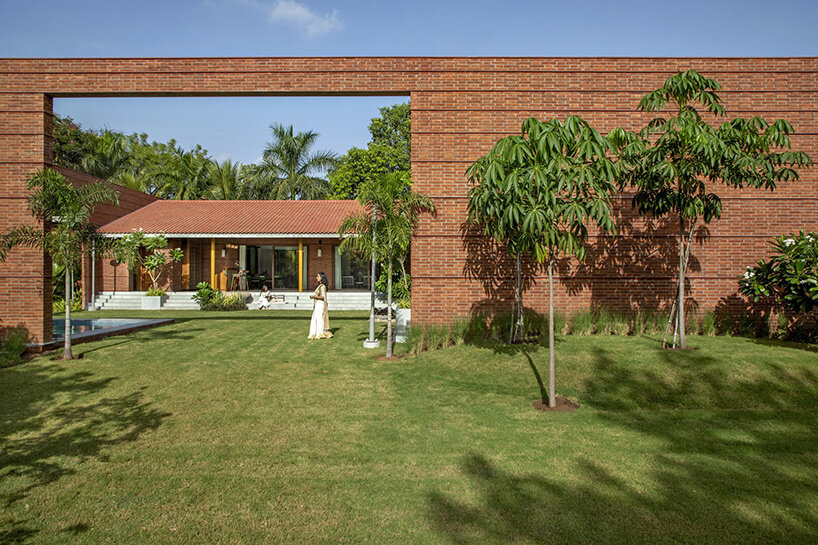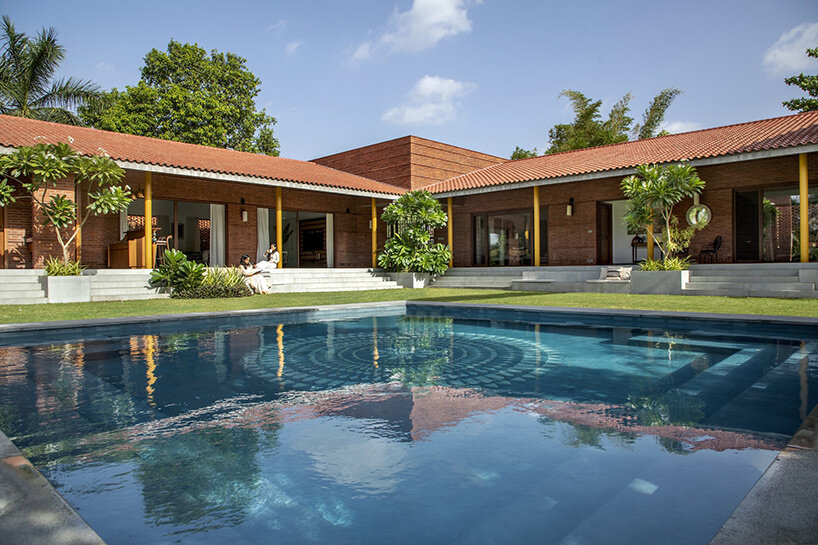DISCOVER THE SITISH PARIKH FARMHOUSE
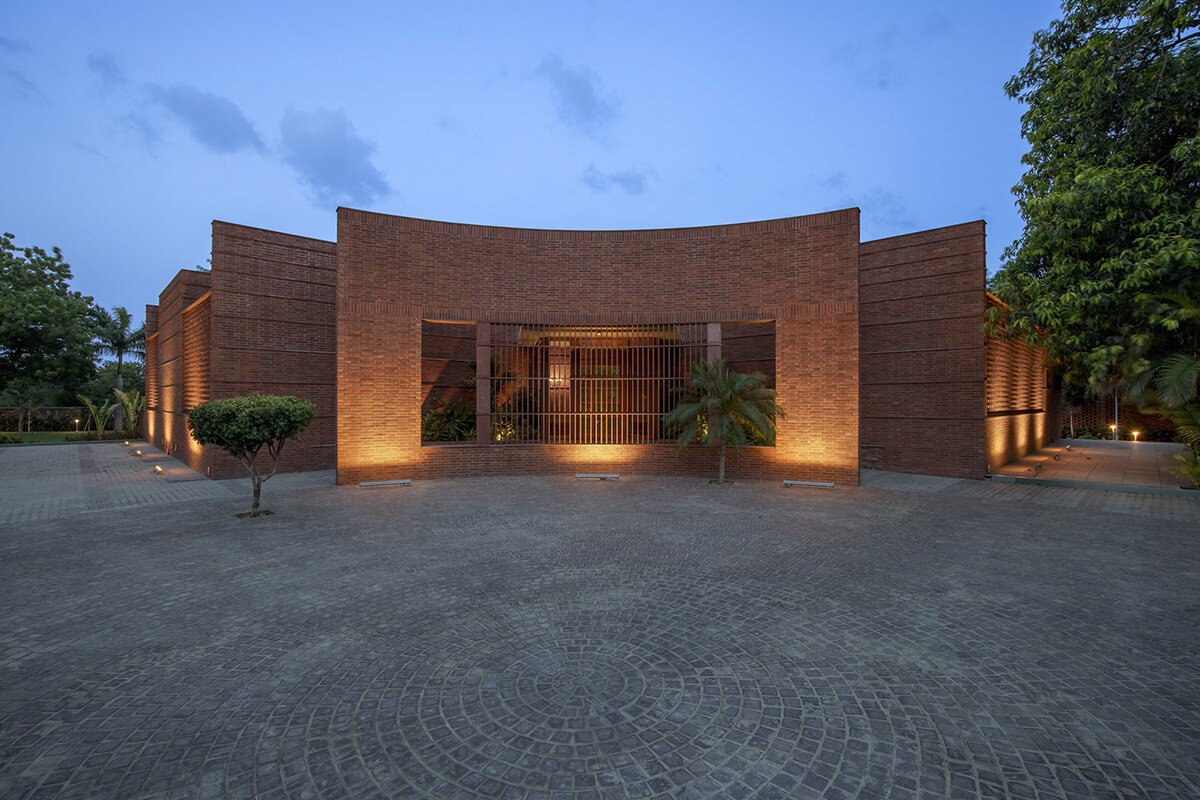
Situated on the outskirts of Vadodara, India, near the village of Aampad, the recently completed Sitish Parikh Farmhouse by architecture studio Dipen Gada and Associates stands as a humble residence that delicately responds to its climate and site. Noteworthy for its dual nature of being both inward and outward-looking, the farmhouse connects with nature, especially the playful element of the sun, through dynamic perforated brick screens and inviting courtyards.
THE DESIGN PROCESS BY DIPEN GADA & ASSOCIATES
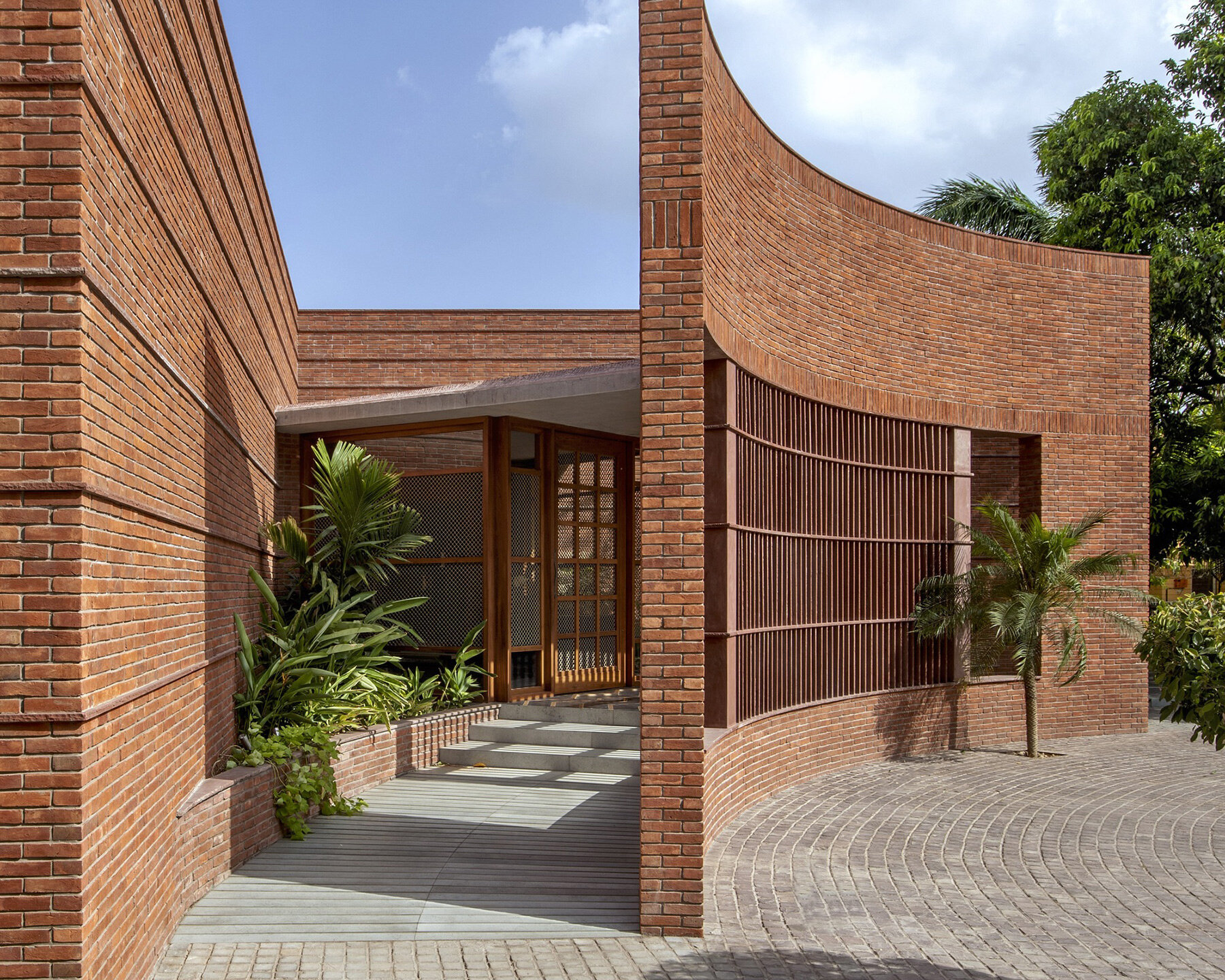
The client, a prominent developer in the city, approached the architects at Dipen Gada and Associates to build the Sitish Parikh Farmhouse as a remote second home in nature. The unique aspect of this project lies in the complete trust bestowed upon the architects by the client, allowing them the freedom to exercise their creativity based on past successful collaborations. With a nearly square plot of land spanning approximately 43,600 square feet, the plot presented a canvas for creativity. The existing orchard and the minimal client requirement of two bedrooms, a kitchen, and a dining area paved the way for a single-floor structure. Inspired by countryside houses, the dwelling features distinctive elements like bricks, sloping roofs, and Mangalore tiles the Sitish Parikh Farmhouse responds to the climate of its site in Vadodara, India
CALMING INTERIORS WITH NATIVE MATERIALS
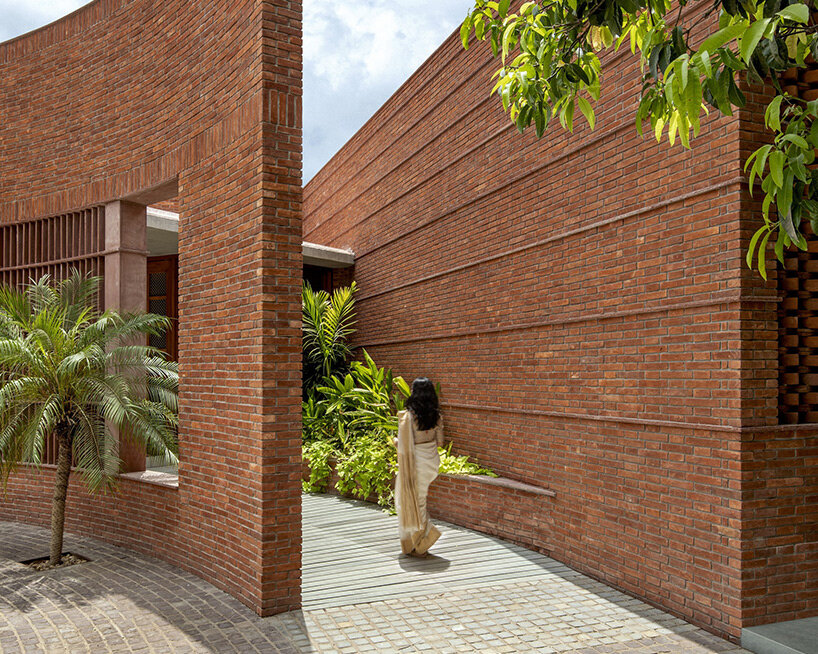
The green setting encouraged the architects at Dipen Gada and Associates to design the Sitish Parikh Farmhouse to maintain a constant connection with the outdoors. The ‘L-shape’ layout divides public and private spaces into separate wings, surrounding a central courtyard-like space with a small swimming pool. The journey towards the house unfolds gradually, beginning with a tall concave wall resembling a perforated jali screen, creating complex, patterned shadows. Inside, the home is finished with a calming white palette complemented by native materials like cane, lime plaster, brick courtyards, and terrazzo. Muted monochromatic tones dominate the interiors, occasionally highlighted by vibrant paintings or furniture pieces.
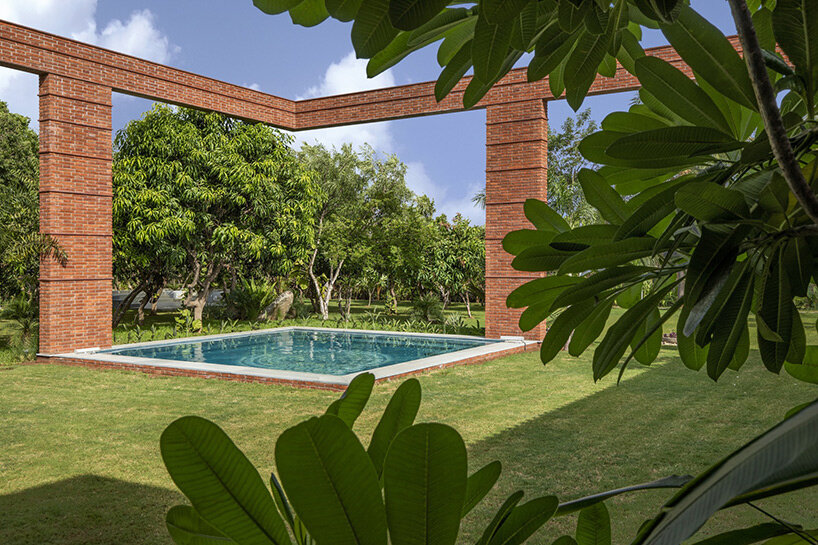
Each room, including the living-dining area and bedrooms, features a semi-covered courtyard and an ambulatory that maintains a constant connection with the outdoors the home connects with nature through perforated screens and inviting courtyardsthe project showcases countryside influences from bricks and sloping roofs to Mangalore tiles muted monochromatic tones dominate the interiors, featuring native materials like cane, lime plaster, and terrazzo the ‘L-shape’ layout unfolds gradually, beginning with a concave brick wall every room maintains a constant link with nature through semi-covered courtyards and ambulatories.
